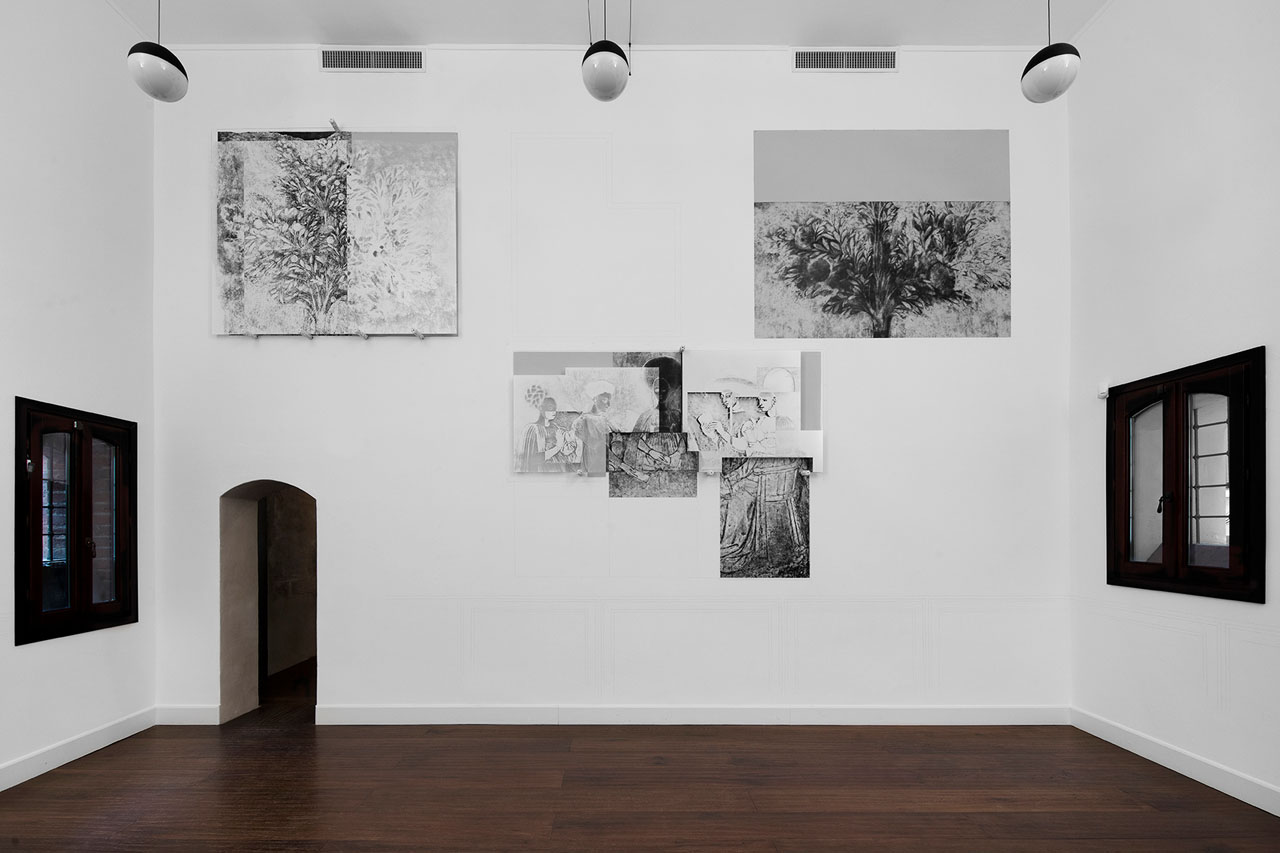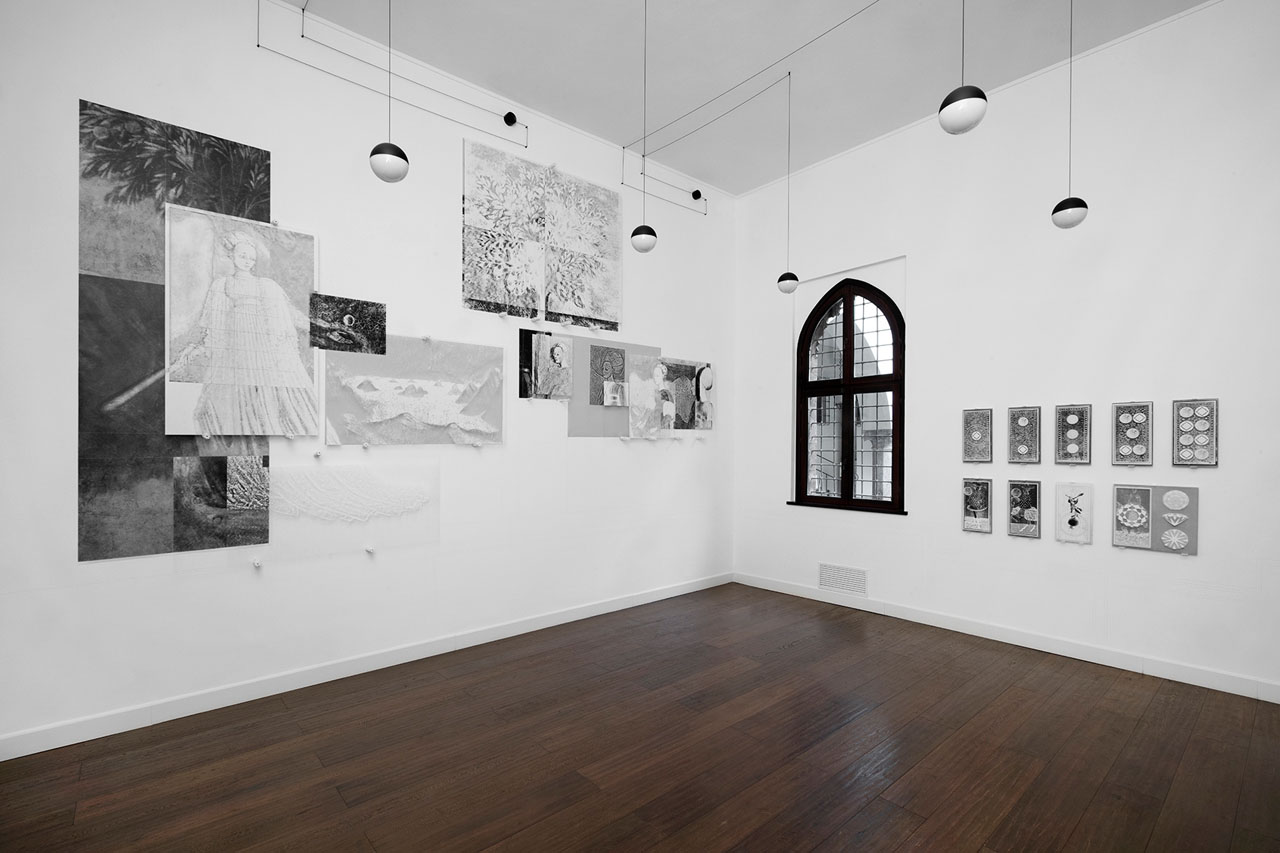Following the map, dated 1839, of Palazzo Borromeo’s second courtyard, the viewer will find, on the left “La raccolta della frutta” (the fruit’s harvest) in room n.82; and in-room n.84 “la stanza dei giochi” (the games’ room).
Their frescos were realized by the Master of Games Borromeo, made in an uncertain period, maybe 145*? 1433?
La Stanza dei Giochi, after the bombardments in 1943, is the only room that fully preserves most of the murals. One wall is dedicated to il gioco dei tarocchi (the game of tarots), one to il gioco della mano (the hand’s game) and one to il gioco della palla (the ball game). Today, only a few parts of “La raccolta della frutta” (the fruit’s harvest) survived. In the frescos everything happens outside, like in the representation of the gardens of the ancient Tacunia Sanitatis, featuring fruit trees (maybe pomegranates) and luxuriant hedges; the characters are wearing elegant and precious clothes for that times. * In the room n.83 “play in the garden” presents a study related to a hypothetical stratigraphic relief realized in the past on the walls of room n. 84.
In Guido’s artworks, the iconography of the frescos is represented, in real scale, flattening any volumetric attempt due to colour and bringing the images to their primordial status of drawing. The project highlights the outlines created by the sinopia painted after the pouncing. On the wall, four levels of time are visible: Plaster layers; the tracing paper’sheets with the drawings needed for the pouncing; the effort to give volume to the forms with monochrome interventions in black and white negative and the projection of the images – given birth by the stratigraphic relief – silk-screened on the glass on a white monochrome. The viewer is absorbed in a space in which an investigation is realized under the walls’ skin in which the drawing that is about to be created and the visualization of the images





